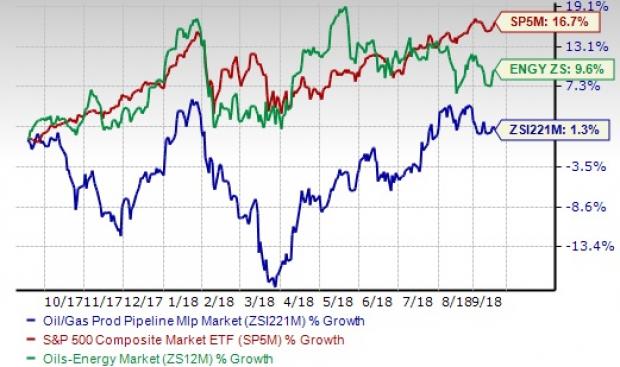Master limited partnerships (or MLPs) typically hold assets related to oil and natural gas pipelines and storage facilities. Unlike companies, MLPs don’t face taxes at corporate levels. Only unitholders have to bear the tax liability once they get their distributions.
The midstream infrastructure assets of MLPs are booked by shippers for long-term transportation and storage of natural gas and oil. In return, MLPs receive steady fee-based revenues, reflecting a low-risk business model.
Increasing demand for clean energy is leading to higher investments in natural-gas fired power plants, replacing coal units in the United States. The move should support natural gas production in the domestic market. Rising exports of natural gas will also add to the need for additional production of the commodity.
Moreover, recovering crude prices are encouraging explorers to bump up oil production. However, the domestic shale plays, especially the Permian Basin, are currently facing pipeline capacity constraint to transport additional crude and natural gas volumes. Hence, the rising need for fresh midstream infrastructures will continue to support MLPs to generate handsome operating cashflows.

Industry Lags on Shareholder Returns
Looking at shareholder returns over the past year, it seems that the pipeline bottleneck problem has been weighing on the industry of late. However, once additional midstream assets come online, we expect investors to gain confidence.
The Zacks Oil & Gas Production Pipeline MLP Industry, part of the broader Zacks Oil and Energy Sector, has underperformed both the S&P 500 and its own sector over the past year.
While stocks in this industry have collectively gained 1.3%, the Zacks S&P 500 Composite and Zacks Oil and Energy Sector have rallied 16.7% and 9.6%, respectively.
One-Year Price Performance

Group Has Room for Upside
Since partnerships use significant debt for funding operations, it makes sense to value them based on the EV/EBITDA (Enterprise Value/ Earnings before Interest Tax Depreciation and Amortization) ratio. This is because the valuation metric considers not just equity but also the level of debt.














Leave A Comment